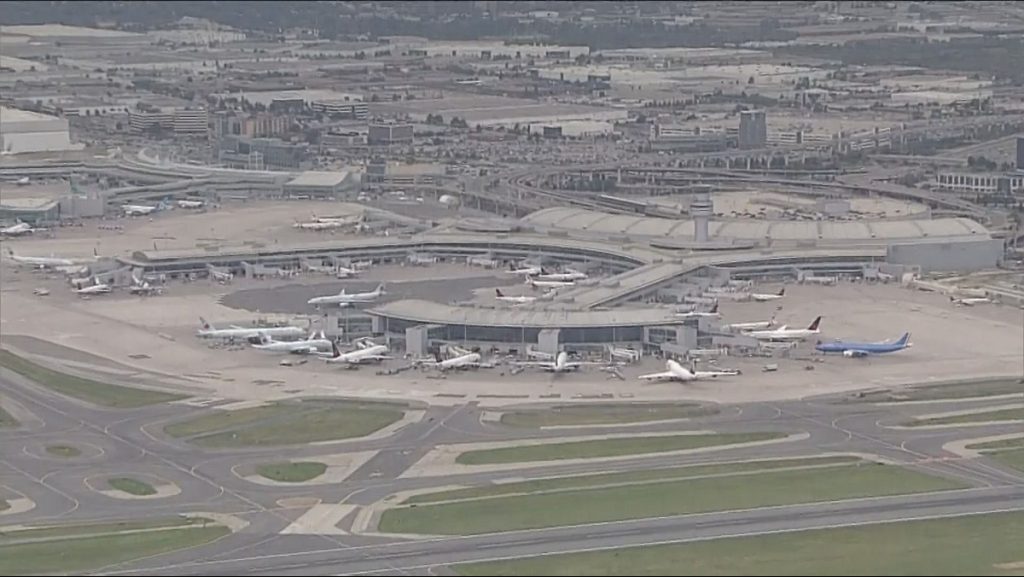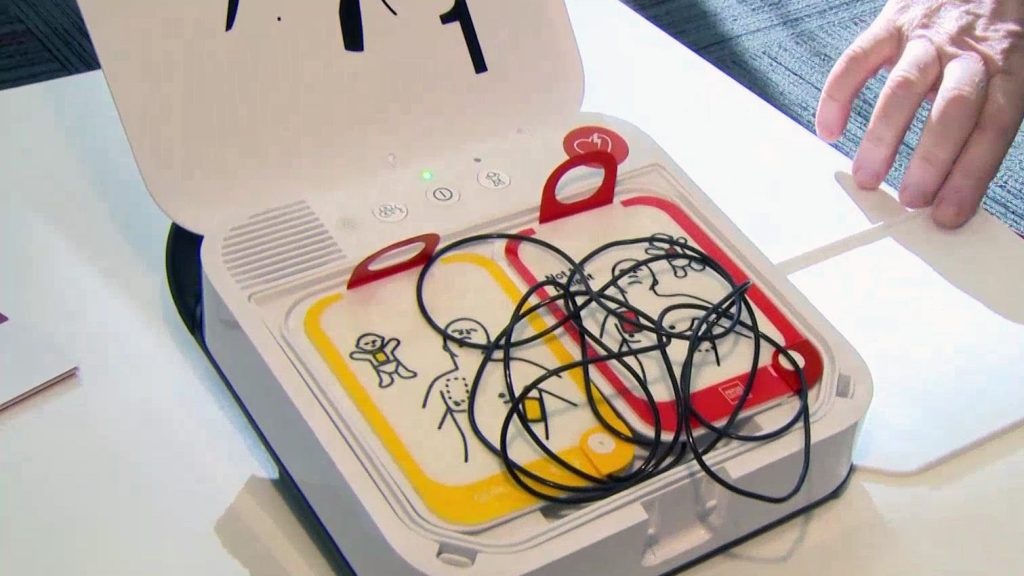Decade-long Toronto Pearson airport expansion, renewal program underway

Posted August 31, 2024 3:00 pm.
Last Updated August 31, 2024 3:57 pm.
Toronto Pearson International Airport is the busiest air travel hub in Canada and as passenger demand increases, officials say the need to expand and renew is growing with every passing year.
“Over 60 per cent of all traffic through this country comes through Pearson,” Karen Mazurkewich, the head of stakeholder relations and communications for the Greater Toronto Airports Authority (GTAA), said.
“Right now we’re between about 46, 47 million passengers a year. By the early 2030s, we’re expecting it to go up to 65 million per year.”
With the number of passengers coming through Pearson airport, polling on experiences at North American “mega airports” found frustrations among some who move through the hallways. A 2023 J.D. Power survey ranked the airport second-last for customer satisfaction. However, officials previously expressed disappointment with the results and talked about efforts to streamline and improve the experience for passengers.
With summer vacations ending as schools start up again in early September, Mazurkewich said this is one of the four busiest periods the airport sees each year. The other periods are at the end of June when schools break for the summer, Christmas and March Break.
During a recent visit to Terminal 1, Mazurkewich told CityNews the airport is also grappling with changes to the aviation sector that will necessitate physical changes
She said they’re seeing airlines transitioning to wider, bigger airplanes versus running more smaller ones. Another change could be using sustainable fuels like hydrogen in the future, which means having a hydrogen plant on the Pearson airport grounds.
More broadly speaking, Mazurkewich said there’s a shift in North American air travel.
“Anyone who has gone through New York recently and looked at some of those airports, they’re our competition,” she said.
“Our competition is not Vancouver, Montreal. Our competition is New York (and) Chicago. The U.S. government put $40 billion into infrastructure during COVID. Their terminals are fantastic.”
The GTAA, which is responsible for operating and maintaining the terminals, the runways and all the other hard infrastructure that makes up Toronto Pearson International Airport, launched a 10-year, multi-billion-dollar program to overhaul its facilities and assets dubbed Pearson LIFT (long-term investments in facilities and terminals).
Mazurkewich said the plan is split into three phases, but emphasized there aren’t firm completion deadlines yet for each phase. She said the first phase happening now is called “the accelerator,” which will address more immediate infrastructure needs.
“A lot of the stuff is going to be the electrical, the plumbing, washrooms, so think about if you’re building a home you’ve got to go behind the walls first,” Mazurkewich said.
“We have all kinds of issues around electrical. Imagine all the runways — we paved a new runway recently — underneath all of that are cables for lights and signalling.”
Fixing washrooms in both terminals was also identified as a pressing need.
“You know 140,000 people come through the airport a day. Imagine the wear and tear on that, we have to keep that going and up with the best materials possible to address it,” she said.
However, there is something noticeable that passengers will see. Work is underway to create an interim terminal somewhere on the property that will be “modern” and “modular.” It’s expected to be able to add capacity for up to seven million more passengers.
The plan’s second phase involves building out the permanent expansion needed to accommodate the forecast surge of travellers at Pearson. Mazurkewich said this phase is still in the developmental stage and it’s unclear if a new, permanent terminal will be built or if there will be expansions at the existing terminals.
“We’re going to be seeing a lot of expansion, more slots for the airlines, more facilities, retail, etc.,” she said.
Mazurkewich said the final phase will be focused on “revitalization” and digitization. It’s expected to start with utilizing biometric technology.
“If you’ve gone through the U.S. recently, you can walk through TSA (Transportation Security Administration) with biometrics. This is something we’ve got to upgrade here with our government to make sure people can go through our airports faster and more efficiently,” she said.
On the revitalization side, upgrading the 30-kilometre baggage system to move luggage better and creating more short-term baggage storage have been identified as priority areas.
Mixed among these formal phases of redevelopment are ongoing talks with the Ontario government to enhance public transit access right at the airport. There have been discussions about potentially pushing the Eglinton Crosstown West extension to the airport from its current endpoint at Renforth Drive in Mississauga.
Also, Mazurkewich said upgrades related to climate change also need to be factored in.
“We’ve had two major flooding events at the airport this summer, so it’s really important,” she said.
“When we talk about Pearson LIFT, we’re also talking about building for the future which is going to be the new norm. We didn’t have these kinds of weather events.
“Whether it was the roadways that were flooded, we had one gate that was flooded, a lot of things that we’re going to have to address going forward.”
The final cost for all the changes hasn’t been detailed, but she said it will go into the billions. It’s expected to be paid for through reinvestment of airport fees since the GTAA is a private, non-profit organization. The second way is expected to be through debt capital.
As for what Toronto Pearson International Airport will be like by 2035, Mazurkewich shared this vision.
“I’m hoping speed and efficiency. I mean that’s what people want. Also, an incredible experience. Airports are now destinations,” she said.
“I’d love to be able to just do what we’re doing now with the Nexus card … but for everybody, so that you could just walk through, they take a scan of your eyes, and you can go straight on through and it just makes such a seamless experience for travel.”








